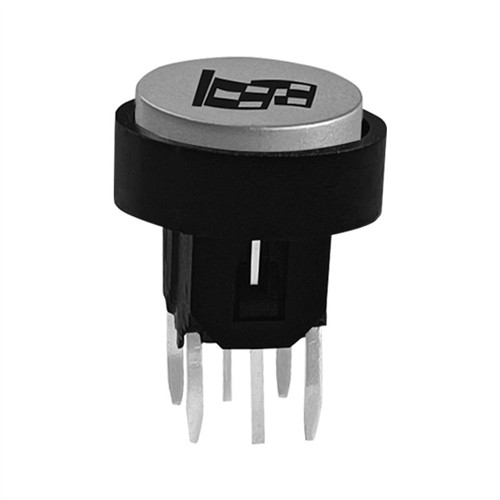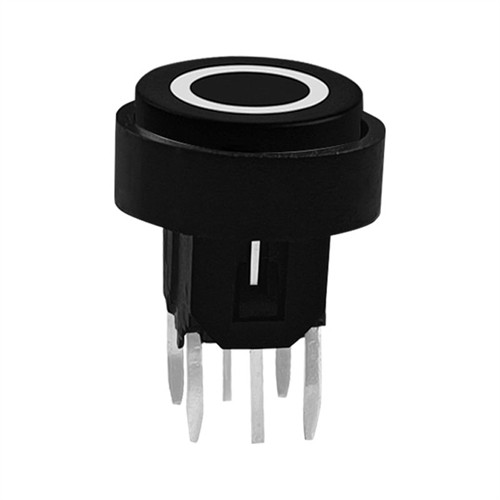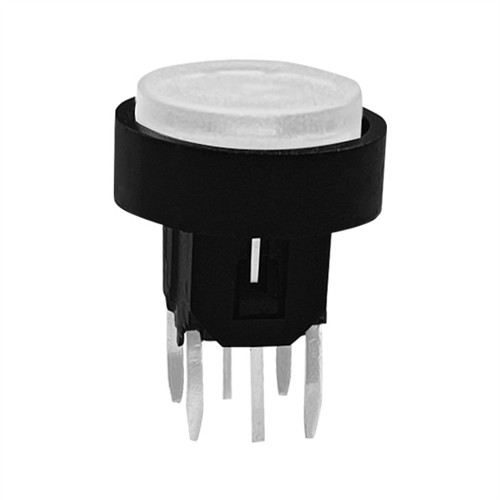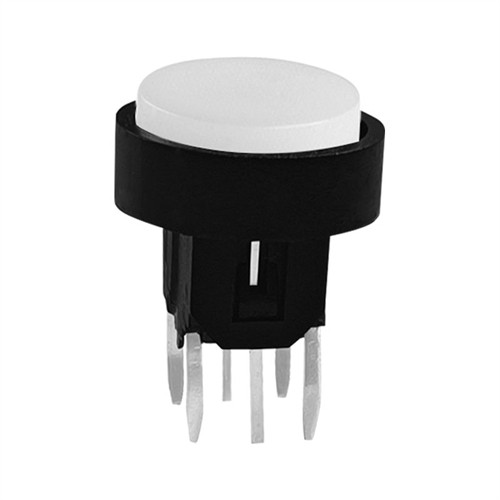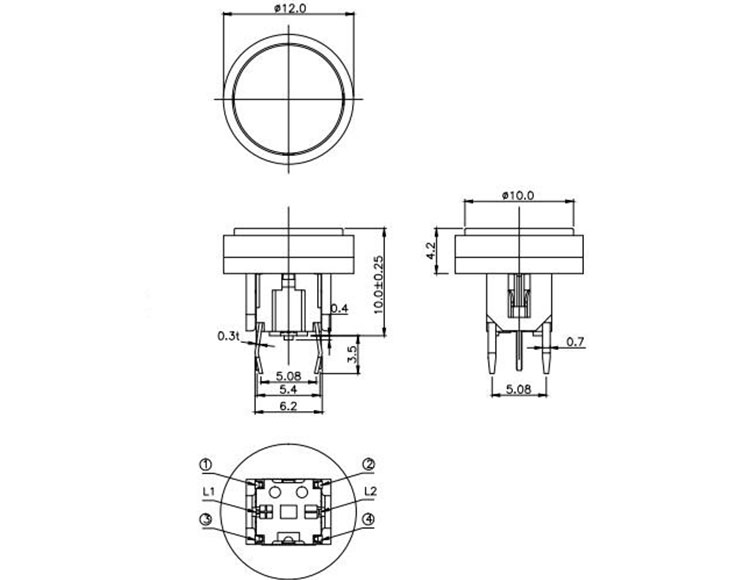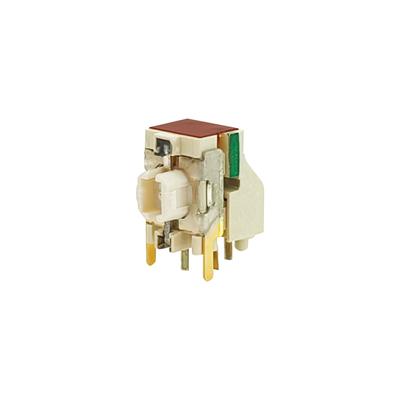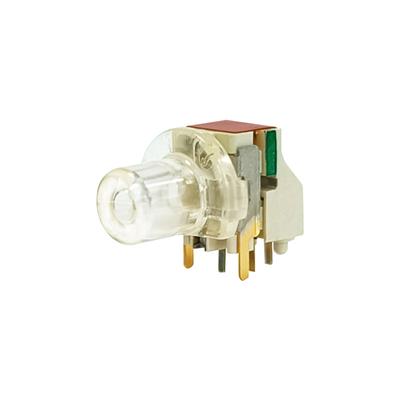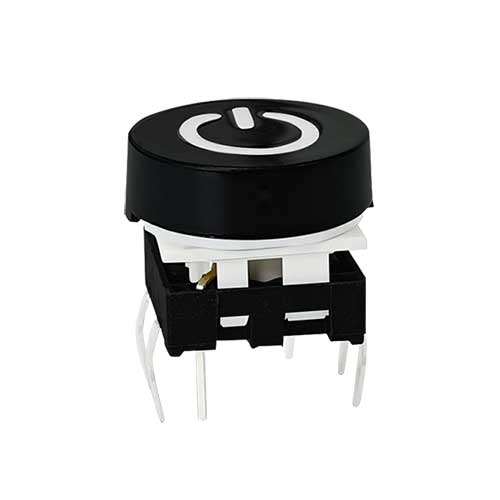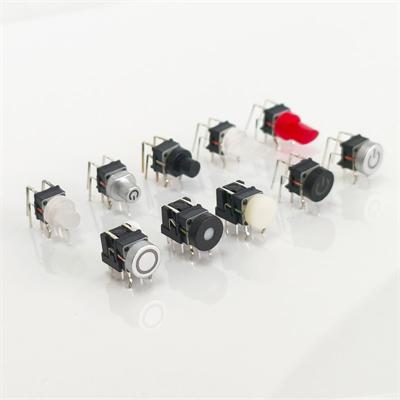Min Illuminated Power Switch
The 12.0mm illuminated tact switch with cap has several advantages over other types of switches. The cap protects the button from damage, making it more durable and reliable.
The 12.0mm Mini Led Tact Switch with cap has several advantages over other types of switches. The cap protects the button from damage, making it more durable and reliable. The tactile feedback provided by the switch helps users to determine whether or not the switch has been activated. The illumination feature of the switch makes it easier to locate in dark conditions, thereby providing more convenience to the user.
There are various types of Momentary Led Tact Switches with caps available in the market. The most common types are single-pole single-throw (SPST) switches, single-pole double-throw (SPDT) switches, and double-pole double-throw (DPDT) switches. These switches have different contact arrangements that determine their operating characteristics.
The SPST switch has two contacts that are closed when the switch is pressed, completing the circuit. This type of switch is commonly used for on/off applications. The SPDT switch has three contacts, with one common contact that connects to either of the other two contacts depending on the state of the switch. This type of switch is used for applications that require the switching between two circuits. The DPDT switch has two sets of contacts, each with a common contact that connects to one of two other contacts depending on the state of the switch. This type of switch is used for applications that require the switching of two circuits at once.
The 12.0mm dimension typically refers to the square footprint of the switch's base, providing a compact yet stable form factor for installation on printed circuit boards (PCBs). The cap, which comes in various shapes and materials, serves multiple purposes. It not only protects the internal components from dust, debris, and accidental damage but also enhances the user experience. Caps can be made of materials like plastic, with options for a smooth or textured finish to improve grip. They are available in different colors, including transparent varieties that allow the LED light to shine through brightly.
Inside the Mini Tactile Led Switch, the tactile mechanism consists of a spring - loaded actuator and a set of electrical contacts. When pressure is applied to the cap, the actuator depresses, causing the contacts to close and complete an electrical circuit. Once the pressure is released, the spring returns the actuator to its original position, opening the circuit. This tactile "click" provides users with immediate feedback, ensuring accurate operation.
The illumination aspect is powered by an integrated LED. The LED can emit light in a range of colors, such as red, green, blue, yellow, or white. Some switches even offer bi - color or multi - color options, allowing for more complex status indication. The light is designed to be visible from various angles, making it easy to identify the switch's state, whether in a brightly lit room or a dimly lit environment.
Electrical Specifications
These switches are designed to operate within specific electrical parameters. A common rated voltage is in the range of DC 3V - 12V, while the rated current can vary but is often around 50mA. The low contact resistance of the switch, typically less than 100mΩ, ensures efficient electrical conduction when the switch is closed. This helps to minimize power loss and heat generation, contributing to the switch's reliability and long - term performance.
The insulation resistance of the switch is high, usually greater than 100MΩ, which prevents electrical leakage between the contacts and the surrounding environment. This is crucial for maintaining the integrity of the electrical circuit and ensuring safe operation.
INQUIRY
CATEGORIES
LATEST NEWS
CONTACT US
Contact: Bella
Phone: 15999819066
E-mail: rucoe@rucoe.com
Whatsapp:+86-15999819066
Add: Taoyuan Street, Nanshan, Shenzhen
